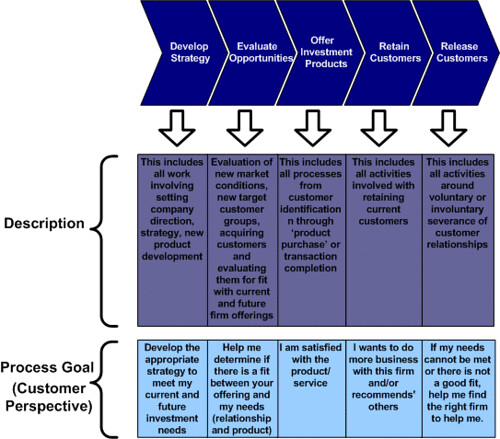Customer Value Stream Thinking
Michael Porter first came up with the concept of a value chain framework as a model to help analyze specific activities through which a firm can create value and competitive advantage. Value creation however is often vague ... value to whom, or from what perspective? In a world focused on customer value, we should be thinking about a customer focused value stream. But how do you do that?
1. Define your customer. With many companies today, the term customer is used very broadly. Robert Simon says in his book Levers of Organizational Design "By labeling everyone as a customer, the organization becomes confused about its purpose and whom it is designed to server". He states that organizations can be effectively designed to only serve one master. I like his definition of a primary customer as a group that routinely transacts with the company through open markets (and therefore has choice), and two, finds value in the firms outputs. Although other groups are important, having one primary customer allows the firm to make appropriate trade offs.
2. Now that you know who your primary customer is, think about the typical value chain where you have inbound logistics (inventory, receiving etc) at the beginning and Marketing, and Service at the end. Then, try flipping it around, where you may have your customer facing components at the beginning of your stream instead of at the end. This will help you think about your value stream in terms of a pull model (based on customer needs), instead of the traditional push model.
3. Think about your value stream components in terms of if, and how they deliver value to your customer. To do this, first use some LEAN principals to understand value-added processes - Suppose your customer had a complete view of all processes carried in your company... which ones would they be willing to pay for as part of the end product cost, and which actually contribute to the value (product or service) delivered. Next, think about an objective statement for each of the components. Often companies think about process objectives from an internal perspective, so try and shift your thinking to that of a customer. For example, lets take a typical value stream component such as 'marketing'. A traditional objective for this component might be "Sell products to our customers". Flipping the value stream in reverse as noted in #2, you might think of marketing as "Identify and Stimulate Demand". This is better, but still an internally focused objective. What might be a customer focused objective for marketing? Possibly something like "Effectively communicate offers (product & price) that are relevant and the appropriate to my needs".
This task can often be challenging. For instance, I once worked for a business unit in a large financial institution where we focused on offering unique products to customers for paying down bad debts. These customers would often rather not pay at all if given a choice, so trying to think about customer objectives on debt collection processes was an interesting exercises, but one that gave us a new perspective on the 'value' we were offering our primary customer. I might also point out that we were not only market leaders in the debt recovery space, but also had customers who were often happy about paying down their debt. I attribute this highly to customer focused thinking within the organization.
So let me present an example of what I have just talked about. I was doing some business strategy work for a friend who owns a small financial services business, and started to think about a potential value stream for him with customer focused objectives. To the right you see the sample value stream model I created. It is more than a one-time thought exercise. It can also help instill the right kind of thinking in your organization, and act as guidance when decisions are being made, and trade offs being evaluated as the organization carries out its business. Does what you do meet your customer objectives?
No comments:
Post a Comment